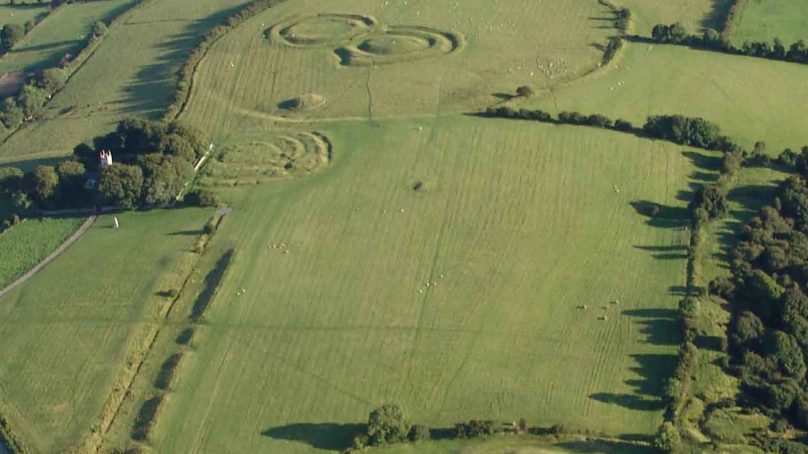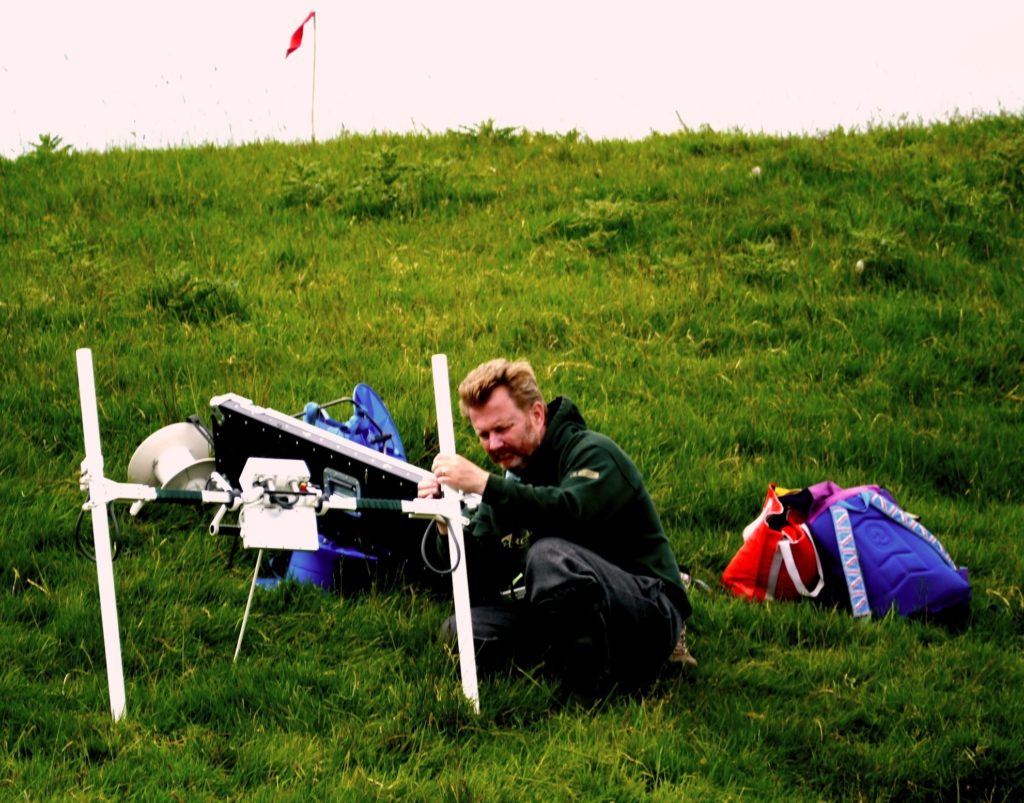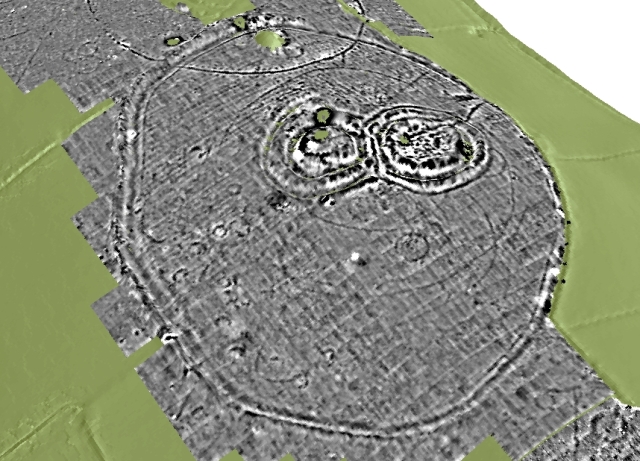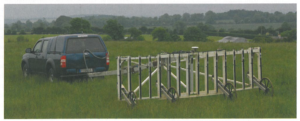
The Hill of Tara is a grand stage, an ancient host of a mélange of ritual performances played out over millennia—perhaps 4,000 years or more—spanning the Neolithic to the early Christian period. Throughout its occupation, each incarnation of beliefs and practices subsumed into its worldview the expression of the former generation. An organic continuity, ever embracing, never erasing. If ancient monuments such as Tara bear only silent testimony to their past glories, Joe Fenwick labors to give them voice.
Joe Fenwick is a member of the School of Geography and Archaeology at the National University of Ireland, Galway, where he works as Archaeological Field Officer. He is responsible for facilitating much of its fieldwork related teaching and research and he continues to have a research interest in number of large-scale collaborative archaeological projects in Ireland. He is currently involved with continuing field research at and around the ancient royal site of Tara in Co. Meath, for example, in collaboration with the Discovery Programme, a research institute based in Dublin, and the Römisch-Germanische Kommission, part of the German Archaeological Institute. He has been working on-and-off at Tara over the course of the past three decades.

Joe Fenwick prepares to deploy a fluxgate gradiometer in his survey of Tara.
To investigate these hidden prehistoric landscapes, Joe relies on a range of geophysical prospection techniques from magnetic susceptibility to gradiometry and earth resistance to ground penetrating radar (GPR). The buried remains of prehistoric monuments that otherwise bear no surface expression can be revealed by virtue of the differing magnetic or electrical properties they might exhibit, for example, in comparison to surrounding soils—and all without disturbing so much as a blade of grass.
One of the most powerful tools in Joe’s arsenal is the fluxgate gradiometer, which can detect the tiny variations in the magnetic qualities of the soil. Not to be confused with the flux capacitor that powered Dr. Emmett Brown’s De Lorean back to the future, Joe’s computer-assisted willow branch propels us back to the past.
Fluxgate gradiometry detects even the slightest of disturbances in the earth’s magnetic field (see sidebar). The remains of a posthole, for example, that might have been part of timber circle or palisade will contain material that is inherently more magnetic than the soil that surrounds it (the by-product of human activity that has permanently altered the physical properties of the soil). As you walk over the area taking readings with the instrument, the burnt or decayed material in the posthole will interfere with the Earth’s magnetic field ever so slightly—just enough to produce an area of contrasting signal between it and the neutral background or surrounding soils. If you take enough readings over a large area, a pattern of these disturbances begins to emerge. And that’s when things begin to get interesting: “Some buried archaeological features,” Fenwick explains, “by virtue of the materials that compose them, can exhibit a surprisingly clear magnetic signature like, for example, some of the great prehistoric ritual monuments on the Hill of Tara.”
The fieldwork by necessity is intensive and meticulous. At the end of each day’s laborious work of scanning labeled grids laid out across the survey area, the data were downloaded to computer. “There would be little inkling of the results,” Joe says, “until the return key was pressed and the new image would materialize on the computer screen.”

The results of magnetometer survey overlaid on a relief-shaded digital terrain model generated from LiDAR data. The survey revealed an intriguing array of features, including the remains of two circular enclosures or barrows, and several long-running ditches.
On one particular day during work on the Hill of Tara, however, even Joe wasn’t prepared for the image that lit up his laptop: the amazingly clear footprint of a massive “ditched pit enclosure”—a great wooden henge, measuring 210 meters by 175 meters, which likely dates to the Late Neolithic, somewhere between 4,500 to 5,000 years ago. In the days of its glory, the monument’s 300 massive oak timbers straddled a deep, rock-cut fosse, demarking the scared space within.
Joe imagines the spectacle of the sight: huge uprights elaborately carved and painted, the oval superstructure capped, perhaps, by lintels, a la Stonehenge. And rising right smack in the middle of it all, Ráith na Senad—the tumulus plundered by a rogue band of British-Isrealites searching for the Ark of the Covenant at the turn of the 20th century.
“There are a great many theories as to what ritual ceremonies may have taken place in this extraordinary timber circle” Joe says. “But each of these monuments has a story to tell. Our geophysics may not tell us the whole history, but they do give us some tantalizing clues.”
In any case, it was an extraordinary architecture designed and built for an extraordinary purpose. And as to the elaborate pagan rituals that undoubtedly were practiced here … God only knows.
We are also left with the mystery of the monument’s equally dramatic demise: the hundreds of posts that made up the rampart were not removed, but very possibly burned—in situ. Was the structure ceremonially torched? Set ablaze by a force of marauding invaders? Whatever the reason, the awe-inspiring circle of flames would have illuminated the night sky in spectacular fashion.
“Despite the major discoveries over recent years, there is nothing new for the visitor to see on the surface of Tara” Joe says, bringing us back to the ghostly image of the ditched pit circle on the computer screen in his Galway office. The fact is, this hill has lain substantially undisturbed since abandoned as great ritual sanctuary some 1,500 years ago. “The buried monument can now be observed only as a ghostly shadow in the computer’s binary memory … until perhaps someday when it is finally revealed through scientific excavation.”
The Fluxgate Gradiometer—Taking a Deeper Dive
A fluxgate gradiometer (a type of magnetometer) is a non-ground contacting device consisting of two sensors, each of which displays values of magnetic gradient simultaneously as a continuous signal. In contrast to other ground-contacting techniques, therefore, it is possible to cover large areas of ground relatively rapidly. This instrument is designed to measure and record minute variations in the vertical component of the Earth’s magnetic field. These variations are largely a result of the presence of relatively near-surface archaeological features or objects that possess a magnetic property which were encountered during the course of the survey.

Speeding up the pace of the survey, a linear array of sixteen fluxgate gradiometers mounted on a wheeled sensor frame is towed behind an ATV, and benefits from GPS for positioning.
The instrument’s depth of investigation is not fixed. It will detect very weak magnetic sources close to the ground surface along with more strongly magnetic features at greater depth. In general, a relatively sharp anomaly response can be expected from features lying close to the ground surface with those at greater depth (below c. 0.5m) displaying a broader, fuzzier outline. The relatively high resolution at which this survey was conducted has enabled correspondingly small sub-surface magnetic features and anomalies to be detected and mapped.
Buried archaeological features such as sediment-filled ditches, drains or pits, for instance, may be detected by virtue of the fact that these may contain a greater concentration or volume of magnetically enhanced sediments in contrast to their surrounding or background soils (Gaffney & Gater 2003, 36-9; Waddell et al. 2009, 19-22; Oswin 2009, 22-4). Additionally, features associated with intensive burning, such as a furnace, oven, hearth or kiln, for example, will commonly display more distinct, localized, thermoremanent magnetism. Certain igneous rock types too, occurring naturally or as part of a built structure—or, indeed, the presence of ferrous material (ancient or modern)—may also exhibit a sizable dipolar magnetic response.
Learn more about the fluxgate gradiometer, and how to design/build one yourself.



